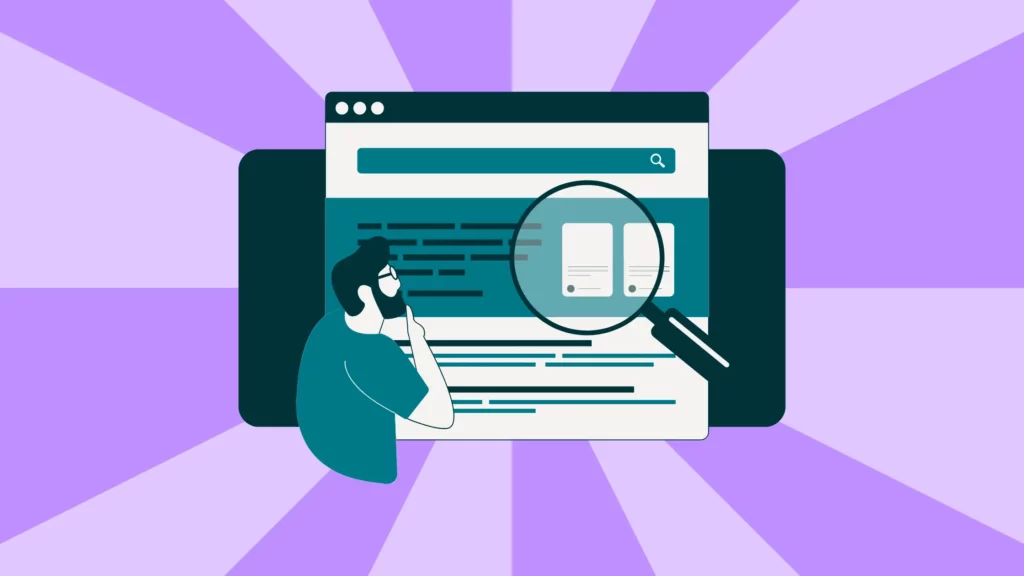
5 ways you can implement AI into your Competitive Intelligence
Artificial Intelligence (AI) is changing the world. From generative AI apps like ChatGPT that revolutionize human-to-computer interaction, to machine learning (ML) tools enhancing medical diagnostics, AI is reshaping what’s possible through automation and data analysis.
So, where does Competitive Intelligence (CI) fit into the AI revolution?
In this post, we’ll:
- Define what AI, ML, and NLP actually are
- Discuss how AI is transforming CI
- Give you five actionable insights into how you can implement AI tools to level up your CI
AI isn’t just a buzzword
It’s easy to throw around trending words like “artificial intelligence” and “machine learning” without explaining what they mean.
So, let’s quickly define the two.
Artificial intelligence imitates trained logic via machines and computer systems. These tools carry out tasks that typically require human beings. AI tools trained on data can tackle problem-solving, pattern recognition, and decision-making. They learn from experience. Natural language processing means machines can “understand” and engage with human language. The vast list of AI technologies includes robotics, expert systems, computer vision, and deep learning platforms.
What makes AI so invaluable to improving CI? The headline grabbers are AI’s capacity to automate tasks, process and analyze vast data sets, and monitor competitors’ actions in real time.
Machine learning, a subset of AI, trains machines from data and experience without specifically programming machines for a particular task. ML algorithms utilize immense datasets to recognize patterns and make predictions. The game-changing aspect of ML models comes through their adaptive learning process. The more data ML models process, the more they can continuously evolve and improve. This ability to perceive concealed patterns and emerging trends within vast datasets makes ML a potent tool for leveling up CI.
Natural language processing (NLP) is another crucial part of AI. It helps create algorithms that allow machines to “understand”, interpret, and generate human language. NLP is game-changing for CI because it can extract valuable insights from vast amounts of unstructured data (like text and speech-based customer reviews).
Why AI is the future of CI?
More and more companies are using AI tools. Simply put: If you’re not using them, you’ll fall behind competitors. Why?
CI without AI tools is not a pretty picture. Collecting and analyzing data typically takes place manually. There are multiple sources to consider (competitor websites, social media, industry reports, customer surveys, financial reports, press releases…the list goes on).
Manually extracting meaningful data from these disparate sources is time-consuming, repetitive – and potentially error-prone. And it leaves companies at risk. How? Well, a significant downside for companies relying on pre-AI data analysis methods is sluggishness in reaction times. New market opportunities or emerging threats can be tricky to discern without the aid of AI, meaning companies that can’t keep on top of the increasing data curve may fall behind competitors or fail to recognize existential risks.
How AI boosts your CI
Using AI in CI actions adds an extra layer of strategic enhancement by giving companies comprehensive insights into competitors’ actions and emerging market trends. By automating repetitive tasks, AI frees up your team members to do what humans do best: strategy, creativity and innovation.
In summary, these are some of the biggest boosts AI provides to CI:
- Automated data collection and analysis that streamlines processes, ensures accuracy and frees up human team members from repetitive tasks
- Real-time monitoring of competitors’ actions allows extensive insights into rivals’ strategy
- Pattern recognition of market trends and anomalies identifies risks and opportunities for companies
- Predictive analytics enables data-driven decision-making to take place, helping companies recognize potential next steps from competitors
- Identification and targeting of specific customer segments means companies can personalize their offering to gain a competitive edge
- Sentiment analysis that gives companies insights into customer feedback from a wide range of online sources
How you can level up your CI with AI: 5 actionable insights
So, we’ve seen the risks of not implementing AI in your CI actions. Now let’s discover how you can put AI to use and turn CI from a reactive process into a proactive one.
1. Benchmark AI tools
Leveraging AI isn’t a one-size-fits-all approach. It’s up to each business to identify the AI tools that are most appropriate for their situation. This requires businesses to adopt a pragmatic, goal-centric approach.
Easier said than done, right? Starting this process can be daunting. After all, there are a whole host of AI tools out there.
Benchmarking AI tools is a great way to adapt your business to AI. By benchmarking, you can evaluate each tool’s respective performance. You can see which tool aligns with your business needs and goals.
Of course, doing this requires your business to define clear objectives. Perhaps you want to analyze emerging market trends or monitor competitors’ actions. Narrowing this down makes it easier for you to select the right AI tool.
Identifying metrics to benchmark also helps in evaluating the performance of tools. For example, you may want to consider ease of integration or data accuracy. Ultimately, benchmarking means your business can ensure the best ROI from the AI tools you examine.
Quick tip:
When benchmarking, select AI tools that are comparable in features and functionality. Want to focus on real-time competitor monitoring? Then compare monitoring tools with similar functions.
2. Cultivate curiosity
So, you’ve benchmarked the relevant AI tools. And you’ve found the right fit and put the tool to use. Now you need to harness some human creativity to maximize your chosen tool’s capabilities.
AI algorithms excel at analyzing vast amounts of data and extracting patterns and curated insights. However, only human expertise can fully contextualize and interpret these insights. This integration of AI tools with human intelligence to enhance decision-making is known as augmented intelligence.
Once your experts have the right tools and skills to leverage AI, a cultural shift within your company is required. AI can provide valuable data, but it’s up to you to embed those insights into your decision-making.
Curiosity and creativity are needed to dive deep into the data and present it to stakeholders in a way they find helpful. This is human-AI collaboration at its best: AI makes vast datasets manageable, but humans turn them into insights and innovations.
With the correct AI tools, you don’t need to be an expert in data science, coding, or NLP. But you do need storytelling skills to present the data in the right way to the right people.
Quick tip:
Consider how you can serve stakeholders by presenting AI-driven data insights in the form of a narrative. This could involve visualizing data, clearly identifying key insights, or contextualizing findings. Sum up your data-driven narrative with actionable suggestions.
3. Adopt continuous learning (for both your AI tools and your employees)
Again, this step is about the intersection of AI-derived insights with human creativity. Adopting a continuous learning approach to using AI tools allows your business to remain agile in a shifting market landscape.
As AI tools speed up your data analysis, increasing its accuracy and comprehensiveness, human employees can keep pace by seizing the chance to make data-driven decisions. To foster this, you should provide regular training opportunities, equipping employees to get the most out of AI tools. Something as simple as encouraging employees to experiment with AI tools can be a great way to familiarize your team with new AI techniques.
Continuous learning also benefits the AI tools themselves. ML algorithms are self-improving, meaning the more new data they process, the more efficient and accurate they become. This constant learning from data hones AI into a strategic asset for your CI, enabling human employees to take advantage of comprehensive market insights.
Consider reinforcement learning for your AI tools. This form of continuous learning teaches AI systems by trial and error. Over time, this approach can maximize your AI tools’ decision-making prowess.
Quick tip:
For your human team members, organize workshops where employees can test AI tools and see how they aid competitive intelligence; this will help familiarize your team with AI. For your chosen AI tools, ensure they are regularly fed new data streams, which will constantly improve their decision-making abilities.
4. Consider cross-functional collaboration (both internally and externally)
If you want to leverage AI-derived insights, don’t overlook the importance of breaking down silos across different teams. Cross-functional collaboration enables various teams to share knowledge and viewpoints on your AI tools’ findings. Multiple perspectives enrich AI’s analysis by providing valuable interpretations.
Cross-functional collaboration can also result in faster time-to-insight. By streamlining the sharing of AI-driven insights with key stakeholders, decision-makers can access crucial data in a timely fashion. When seeking a competitive edge, this acceleration in information-sharing can be crucial, allowing companies to respond quickly to market trends spotted by AI.
Collaboration should also extend to the AI service providers your company selects. Data scientists, analysts, and consultants should be available to ensure businesses get accurate and actionable insights. This takes ongoing communication, data analysis, and feedback loops to generate constant improvement and adaptation to changing business needs.
The onus is on AI-service providers to enable users to quickly access AI-driven insights in as understandable a format as possible. Findings may be delivered in the form of charts, graphs, or templates. Having accessible data-driven analysis will allow your company to make informed decisions in its competitive intelligence actions.
Quick tip:
Foster a culture of learning across your entire organization to accelerate time to insight. Select an AI service provider that generates accessible insights from the mass of ML-processed findings.
5. Enhance CI even further with explainable AI
As we’ve seen, AI tools exponentially accelerate analysis and insight for competitive intelligence, opening up new opportunities for companies to gain strategic advantages. But as ML algorithms increase in complexity, the need for accountable, comprehensible AI-driven decision-making also grows. This is where explainable AI (XAI) comes in.
XAI seeks to make the decision-making process of AI models and ML algorithms transparent to humans by giving accountable explanations for AI-derived decisions and insights. Let’s look at why this is important.
AI decision-making can unintentionally perpetuate human biases in the data it learns from (see our earlier definition of ML). These, often unconsciously, may filter into the training data, leading to prejudiced outcomes. Recognizing bias is vital to ensuring AI’s ethical and fair use in CI.
XAI, by making AI-driven decisions understandable to humans, counters the risk of unintentional bias through the transparency of the sources the analysis is taken from. This transparency allows businesses to justify their AI-driven market intelligence actions and remain confident that these decisions are not unintentionally prejudiced. On an individual level, it means a human being can understand why an AI tool has suggested a specific course of action.
Using XAI can also help businesses meet stringent data protection regulations, such as GDPR, by clearly explaining how sensitive data is used in competitive intelligence.
Quick tip:
When implementing XAI in your CI, find a service provider whose AI tools are trained on relevant business sources – not simply anything that floats along on the internet.
Start preparing for the future of CI today
The adoption of AI in competitive intelligence will only increase in importance. The transformative power of AI’s rapid and accurate data analysis is evident. There’s the automation of repetitive tasks and the freeing up of human creativity. And the comprehensive data-driven insights that identify market trends, opportunities, and risks. Combined, these factors mean any business wishing to remain ahead of its competitors cannot afford to be without AI tools to enhance CI.




